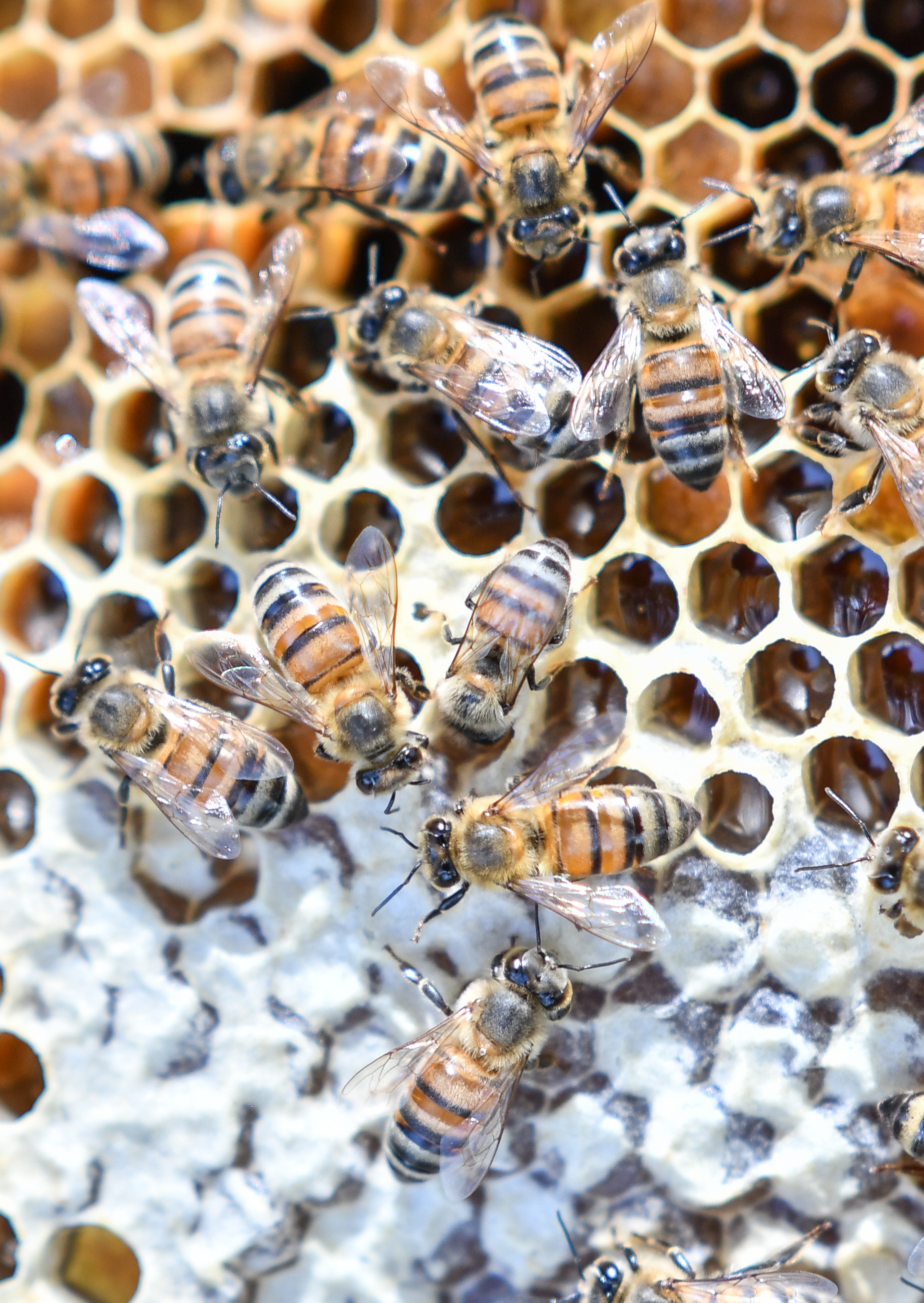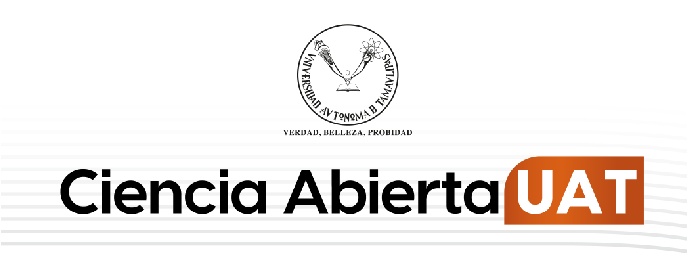La apicultura y el control químico de la mosca mexicana de la fruta dentro del enfoque en una sola salud: el caso del estado de Tamaulipas, México
DOI:
https://doi.org/10.29059/cvpa.v2i1.21Palabras clave:
Anastrepha ludens, Apis mellifera, cítricos, malatiónResumen
La apicultura y el control de la mosca mexicana de la fruta, Anastrepha ludens Loew (Diptera: Tephritidae), son dos actividades paralelas en áreas citrícolas que pueden ser abordadas desde la perspectiva de una sola salud. El estado de Tamaulipas es una de las entidades con mayor producción de cítricos en México, donde una de sus problemáticas es la presencia de A. ludens. El control químico de esta plaga se basa en el uso de malatión, un organofosforado que puede tener efectos en colonias de polinizadores tales como Apis mellifera L. (Hymenoptera: Apidae). Esta revisión pretende poner en el contexto de una sola salud la actividad apícola en la zona citrícola de Tamaulipas respecto a la aplicación del malatión como medida de control de A. ludens. Se proveen datos de la apicultura y de la citricultura contemplando la perspectiva de una sola salud. Se abordan aspectos del control químico de A. ludens y su potencial efecto sobre la actividad apícola. Se concluye en la necesidad de investigación básica y aplicada que ofrezca información integral de la región para la construcción de políticas públicas de apoyo a la apicultura en Tamaulipas y cuidado al medio ambiente.
Citas
Aluja, M. (1993). Manejo Integrado de Moscas de la Fruta. Editorial Trillas.
Baena-Díaz, F., Chévez, E., Ruiz de la Merced, F., & Porter-Bolland, L. (2022). Apis mellifera en México: producción de miel, flora melífera y aspectos de polinización. Revisión. Revista Mexicana de Ciencias Pecuarias, 13(2), 525-548. https://cienciaspecuarias.inifap.gob.mx/index.php/Pecuarias/article/view/5960 DOI: https://doi.org/10.22319/rmcp.v13i2.5960
Balvino-Olvera, F. J., Lobo, J. A., Aguilar-Aguilar, M. J., Ruiz-Guzmán, G., González-Rodríguez, A., Ruiz-Mercado, I., . . . Quesada, M. (2023). Long-term spatiotemporal patterns in the number of colonies and honey production in Mexico. Scientific Reports, 13(1), 1017. https://doi.org/10.1038/s41598-022-25469-8 DOI: https://doi.org/10.1038/s41598-022-25469-8
Benuszak, J., Laurent, M., & Chauzat, M.-P. (2017). The exposure of honey bees (Apis mellifera; Hymenoptera: Apidae) to pesticides: Room for improvement in research. Science of The Total Environment, 587-588, 423-38. https://doi.org/10.1016/j.scitotenv.2017.02.062 DOI: https://doi.org/10.1016/j.scitotenv.2017.02.062
Cabrera-Marín, N. V., Liedo, P., & Sánchez, D. (2016). The effect of application rate of GF-120 (Spinosad) and malathion on the mortality of Apis mellifera (Hymenoptera: Apidae) foragers. Journal of Economic Entomology, 109(2), 515-519. DOI: https://doi.org/10.1093/jee/tov385
Calatayud-Vernich, P., Calatayud, F., Simó, E., Suarez-Varela, M. M., & Picó, Y. (2016). Influence of pesticide use in fruit orchards during blooming on honeybee mortality in 4 experimental apiaries. Science of The Total Environment, 541, 33-41. https://doi.org/10.1016/j.scitotenv.2015.08.131 DOI: https://doi.org/10.1016/j.scitotenv.2015.08.131
Chauzat, M. P., Faucon, J. P., Martel, A. C., Lachaize, J., Cougoule, N., & Aubert, M. (2006). A survey of pesticide residues in pollen loads collected by honey bees in France. Journal of economic entomology, 99(2), 253-262. https://doi.org/10.1093/jee/99.2.253 DOI: https://doi.org/10.1093/jee/99.2.253
Christen, V., & Fent, K. (2017). Exposure of honey bees (Apis mellifera) to different classes of insecticides exhibit distinct molecular effect patterns at concentrations that mimic environmental contamination. Environmental Pollution, 226, 48-59. https://doi.org/10.1016/j.envpol.2017.04.003 DOI: https://doi.org/10.1016/j.envpol.2017.04.003
de Jongh, E. J., Harper, S. L., Yamamoto, S. S., Wright, C. J., Wilkinson, C. W., Ghosh, S., & Otto, S. J. G. (2022). One Health, One Hive: A scoping review of honey bees, climate change, pollutants, and antimicrobial resistance. PLoS ONE, 17(2), e0242393. DOI: https://doi.org/10.1371/journal.pone.0242393
Dicks, L. V., Breeze, T. D., Ngo, H. T., Senapathi, D., An, J., Aizen, M. A., . . . Potts, S. G. (2021). A global-scale expert assessment of drivers and risks associated with pollinator decline. Nature Ecology & Evolution, 5(10), 1453-1461. https://doi.org/10.1038/s41559-021-01534-9 DOI: https://doi.org/10.1038/s41559-021-01534-9
Domínguez, V. M., Leyva, J. L., Moreno, D. S., Trujillo, F. J., Alatorre, R., & Becerril, A. E. (2003). Toxicidad sobre Apis mellifera de cebos empleados en el combate de moscas de la fruta. Manejo Integrado de Plagas y Agroecología (Costa Rica), 69, 66-72.
Donkersley, P., Elsner-Adams, E., & Maderson, S. (2020). A One-Health model for reversing honeybee (Apis mellifera L.) decline. Veterinary Sciences, 7(3), 119. https://www.mdpi.com/2306-7381/7/3/119 DOI: https://doi.org/10.3390/vetsci7030119
Edwards, J. W., Lee, S. G., Heath, L. M., & Pisaniello, D. L. (2007). Worker exposure and a risk assessment of malathion and fenthion used in the control of Mediterranean fruit fly in South Australia. Environmental Research, 103(1), 38-45. https://doi.org/10.1016/j.envres.2006.06.001 DOI: https://doi.org/10.1016/j.envres.2006.06.001
Enkerlin, W. R., Gutiérrez Ruelas, J. M., Pantaleon, R., Soto Litera, C., Villaseñor Cortés, A., Zavala López, J. L., . . . Hendrichs, J. (2017). The Moscamed Regional Programme: review of a success story of area-wide sterile insect technique application. Entomologia Experimentalis et Applicata, 164(3), 188-203. https://doi.org/https://doi.org/10.1111/eea.12611 DOI: https://doi.org/10.1111/eea.12611
EPA. (2009). Revised reregistration eligibility decision (RED) for Malathion; EPA 738-R-06-030. Retrieved 24/05/2024 http://archive.epa.gov/pesticides/reregistration/web/pdf/malathionred-revised.pdf
Falkenberg, T., Ekesi, S., & Borgemeister, C. (2022). Integrated Pest Management (IPM) and One Health — a call for action to integrate. Current Opinion in Insect Science, 53, 100960. https://doi.org/10.1016/j.cois.2022.100960 DOI: https://doi.org/10.1016/j.cois.2022.100960
FAO. (2024). FAOSTAT. Food and Agriculture Organization of the United Nations. Retrieved 07/04/2024 from https://www.fao.org/faostat/en/#home
FAO, IZSLT, Apimondia, & CAAS. (2021). Good beekeeping practices for sustainable apiculture FAO Animal Production and Health Guidelines No. 25. Food and Agriculture Organization of the United Nations.
FAO/IAEA. (2023). Guideline on phytosanitary procedures for area-wide management of fruit fly pests.
FAO. FAO/OIE/WHO/UNDEP. (2021). Joint Tripartite (FAO, OIE, WHO) and UNEP Statement. Tripartite and UNEP support OHHLEP’s definition of “One Health”. World Health Organization. Retrieved 01/04/2024 https://www.who.int/news/item/01-12-2021-tripartite-and-unep-supportohhlep-s-definition-of-one-health
Gajardo-Rojas, M., Muñoz, A. A., Barichivich, J., Klock-Barría, K., Gayo, E. M., Fontúrbel, F. E., . . .Veas, C. (2022). Declining honey production and beekeeper adaptation to climate change in Chile. Progress in Physical Geography: Earth and Environment, 46(5), 737-756. https://journals.sagepub.com/doi/abs/10.1177/03091333221093757 DOI: https://doi.org/10.1177/03091333221093757
García-Rojas, J. C., Robles-Bermúdez, A., Vega-Frutis, R., Cambero-Campos, O. J., & Peña-Sandoval, G. R. (2023). Caracterización de la susceptibilidad al malatión en la moscade las indias occidentales. Southwestern Entomologist, 48 (1), 257-266. https://doi.org/10.3958/059.048.0125 DOI: https://doi.org/10.3958/059.048.0125
Gary, N. E., & Mussen, E. C. (1984). Impact of Mediterranean fruit fly malathion bait spray on honey bees. Environmental Entomology, 13(3), 711-717. https://doi.org/10.1093/ee/13.3.711 DOI: https://doi.org/10.1093/ee/13.3.711
González-Rodríguez, L. E., Mora-Olivo, A., Guerra-Pérez, A., Garza-Torres, H. A., & Fernández de Castro-Martínez, G. (2010). La apicultura en Tamaulipas, una actividad muy dulce y nutritiva. CienciaUAT, 4(4), 8-12. https://revistaciencia.uat.edu.mx/index.php/CienciaUAT/article/view/251
González-Suárez, M., Mora-Olivo, A., Villanueva-Gutiérrez, R., Lara-Villalón, M., Vanoye-Eligio, V., & Guerra-Pérez, A. (2020). Diversidad de la flora de interés apícola en el estado de Tamaulipas, México. Revista Mexicana de Ciencias Pecuarias, 11(3), 914-932. DOI: https://doi.org/10.22319/rmcp.v11i3.4717
Grajales-Conesa, J., Meléndez-Ramírez, V., Cruz-López, L., & Sánchez, D. (2013). Native bees in blooming orange (Citrus sinensis) and lemon (C. limon) orchards in Yucatán, Mexico. Acta Zoológica Mexicana (N.S.), 29(2), 437-440. https://doi.org/10.21829/azm.2013.2921124 DOI: https://doi.org/10.21829/azm.2013.2921124
Guyton, K. Z., Loomis, D., Grosse, Y., El Ghissassi, F., Benbrahim-Tallaa, L., Guha, N., ... & Straif, K. (2015). Carcinogenicity of tetrachlorvinphos, parathion, malathion, diazinon, and glyphosate. The Lancet Oncology, 16(5), 490-491. https://doi.org/10.1016/S1470-2045(15)70134-8 DOI: https://doi.org/10.1016/S1470-2045(15)70134-8
Hendrichs, J., Kenmore, P., Robinson, A. S., & Vreysen, M. J. B. (2007). Area-wide integrated pest management (AW-IPM): principles, practice and prospects. In M. J. B. Vreysen, A. S.
Robinson, & J. Hendrichs (Eds.), Area-Wide control of insect pests: from research to field implementation (pp. 3-33). Springer.
Kotovs, D., & Zacepins, A. (2023). GIS-based interactive map to improve scheduling beekeeping activities. Agriculture, 13(3), 669. https://www.mdpi.com/2077-0472/13/3/669 DOI: https://doi.org/10.3390/agriculture13030669
Lasa, R., Toxtega, Y., Herrera, F., Cruz, A., Navarrete, M. A., & Antonio, S. (2014). Inexpensive traps for use in mass trapping Anastrepha ludens (Diptera: Tephritidae). Florida Entomologist, 97, 1123-1130. DOI: https://doi.org/10.1653/024.097.0319
Loera-Gallardo, J., Reyes-Sosa, M. A., & López-Arroyo, J. I. (2012). Efficacy of ground-applied ultra low volume malathion plus hydrolized protein against the Mexican fruit fly Anastrepha ludens (Diptera: Tephritidae). Florida Entomologist, 95(3), 771-773. https://doi.org/10.1653/024.095.0330 DOI: https://doi.org/10.1653/024.095.0330
Mazor, M., Gazit, S., Reuven, G., & Efrat, H. (2003). Unattractiveness of three comercial proteinaceous fruit fly baits to honey bees. Crop Protection, 22(7), 995-997. https://doi.org/10.1016/S0261-2194(03)00089-9 DOI: https://doi.org/10.1016/S0261-2194(03)00089-9
Michaud, J. P. (2003). Toxicity of fruit fly baits to beneficial insects in citrus. Journal of Insect Science, 3, 1-9. DOI: https://doi.org/10.1673/031.003.0801
NOM-023-FITO-1995. Norma Oficial Mexicana NOM-023-FITO-1995 por la que establece la Campaña Nacional Contra Moscas de la Fruta.
Ollerton, J., Winfree, R., & Tarrant, S. (2011). How many flowering plants are pollinated by animals? Oikos, 120(3), 321-326. https://doi.org/10.1111/j.1600-0706.2010.18644.x DOI: https://doi.org/10.1111/j.1600-0706.2010.18644.x
Padrón-Chávez, J. E., & Rocha-Peña, M. A. (2009). Cultivares y Portainjertos Cítricos. In M. A. R. Peña & J. E. P. Chávez (Eds.), El Cultivo de los Cítricos en el Estado de Nuevo León. Libro Científico No. 1 (pp. 56-89). Instituto Nacional de Investigaciones Forestales, Agrícolas y Pecuarias. CIRNE. Campo Experimental General Terán.
Pankiw, T., & Jay, S. C. (1992). Aerially applied ultra-low-volume malathion effects on caged honey bees (Hymenoptera: Apidae), caged mosquitoes (Diptera: Culicidae), and malathion residues. Journal of Economic Entomology, 85(3), 687-691. https://doi.org/10.1093/jee/85.3.687 DOI: https://doi.org/10.1093/jee/85.3.687
Pettan-Brewer, C., Penn, G., Biondo, A. W., Jaenisch, T., Grützmacher, K., & Kahn, L. H. (2024). Who coined the term “One Health”? Cooperation amid the siloizat ion. One Health, 18, 100678. https://doi.org/10.1016/j.onehlt.2024.100678 DOI: https://doi.org/10.1016/j.onehlt.2024.100678
Procopio, A. C., Colletta, S., Laratta, E., Mellace, M., Tilocca, B., Ceniti, C., . . . Roncada, P. (2024). Integrated One Health strategies in Dengue. One Health, 18, 100684. https://doi.org/10.1016/j.onehlt.2024.100684 DOI: https://doi.org/10.1016/j.onehlt.2024.100684
Roth, M. A., Wilson, J. M., Tignor, K. R., & Gross, A. D. (2020). Biology and management of Varroa destructor (Mesostigmata: Varroidae) in Apis mellifera (Hymenoptera: Apidae) colonies. Journal of Integrated Pest Management, 11(1), 1. https://doi.org/10.1093/jipm/pmz036 DOI: https://doi.org/10.1093/jipm/pmz036
SADER, SEMARNAT, SENASICA, CONABIO, & CONANP. (2021). Diagnóstico. Situación actual de los polinizadores en México. Gobierno de México.
SADER/SENASICA. (2019). Manual Técnico para las Operaciones de Campo para la Campaña Nacional Contra Moscas de la Fruta sección II: Control Químico. SADER/SENASICA.
SADER/SENASICA. (2021). Programa de trabajo integral de los subcomponentes de vigilancia epidemiológica de riesgos fitosanitarios y servicio fitosanitario en apoyo a la producción para el bienestar y prevención, control y erradicación de plagas fitosanitarias en el estado de Tamaulipas, del programa de Sanidad e Inocuidad Agroalimentaria ejercicio fiscal 2021, con recursos de origen federal. México: Gobierno de México Obtenido de https://www.gob.mx/cms/uploads/attachment/file/707083/Tamaulipas_autorizado.pdf
SADER/SENASICA. (2022). Programa de trabajo integral del subcomponente servicio fitosanitario en apoyo a la producción para el bienestar y prevención, control y erradicación de plagas fitosanitarias en el estado de Tamaulipas, del programa de Sanidad e Inocuidad Agroalimentaria ejercicio fiscal 2022, con recursos de origen federal. México: Gobierno de México Obtenido de https://www.gob.mx/cms/uploads/attachment/file/761954/Tamaulipas.pdf
SADER/SENASICA. (2023). Programa de trabajo integral del subcomponente servicio fitosanitario en apoyo a la producción para el bienestar y prevención, control y erradicación de plagas fitosanitarias en el estado de Tamaulipas, del programa de Sanidad e Inocuidad Agroalimentaria ejercicio fiscal 2023 con recursos de origen federal. México: Gobierno de México Obtenido de https://www.gob.mx/cms/uploads/attachment/file/840063/28_Tamaulipas-compressed.pdf
SAGARPA. (2013). Padrón de Productores de Cítricos Georeferenciados 2010-2012 Tamaulipas. Secretaría de Agricultura, Ganadería, Desarrollo Rural, Pesca y Alimentación. http://www.sagarpa.gob.mx/Delegaciones/tamaulipas/Documents/padron_citricos%202010-2012.pdf
SIAP. (2021). Avance de Siembras y Cosechas Resumen nacional por cultivo. Servicio de Información Agroalimentaria y Pesquera. Gobierno de México. Retrieved 15/04/2021 from https://nube.siap.gob.mx/avance_agricola/
SIAP. (2022). Anuario Estadístico de la Producción Ganadera. Servicio de Información Agroalimentaria y Pesquera. Goberno de México. Retrieved 29/03/2024 from https/:/nube.siap.gob.mx/cierre_pecuario/
SIAP. (2023). Población Ganadera. Servicio de Información Agroalimentaria y Pesquera. Gobierno de México. Retrieved 06/04/2024 from https://nube.siap.gob.mx/poblacion_ganadera/
SMN. (2024). Monitor de sequía en México. Servicio Meteorológico Nacional. Gobierno de México. Retrieved 13/04/2024 from https://smn.conagua.gob.mx/es/climatologia/monitor-de-sequia/monitor-de-sequia-en-mexico
St. Clair, A. L., Zhang, G., Dolezal, A. G., O’Neal, M. E., & Toth, A. L. (2022). Agroecosystem landscape diversity shapes wild bee communities independent of managed honey bee presence. Agriculture, Ecosystems & Environment, 327, 107826. https://doi.org/10.1016/j.agee.2021.107826 DOI: https://doi.org/10.1016/j.agee.2021.107826
Tamaulipas (2016). Agropecuario. Municipio de Padilla. Tamaulipas. Retrieved 24/05/2024 from http://www.padilla.gob.mx/sececonomico/agropecuario.htm
Thomas, D. (2003). Nontarget insects captured in fruit fly (Diptera: Tephritidae) surveillance traps. Journal of Economic Entomology, 96(6), 1732-1737. https://doi.org/10.1603/0022-0493-96.6.1732 DOI: https://doi.org/10.1603/0022-0493-96.6.1732
Thomas, D., & Mangan, R. L. (2005). Nontarget impact of Spinosad GF-120 bait sprays for control of the Mexican fruit Fly (Diptera: Tephritidae) in Texas citrus. Journal of Economic Entomology, 98(6), 1950-1956. DOI: https://doi.org/10.1093/jee/98.6.1950
Valdovinos-Flores, C., Alcantar-Rosales, V. M., Gaspar-Ramírez, O., Saldaña-Loza, L. M., & Dorantes-Ugalde, J. A. (2017). Agricultural pesticide residues in honey and wax combs from Southeastern, Central and Northeastern Mexico. Journal of Apicultural Research, 56(5), 667-679. https://doi.org/10.1080/00218839.2017.1340798 DOI: https://doi.org/10.1080/00218839.2017.1340798
Vanoye-Eligio, V., Barrientos-Lozano, L., Mora-Olivo, A., Sánchez-Ramos, G., & Chacón-Hernández, J. C. (2017). Spatial heterogeneity of Anastrepha ludens populations over a large citrus region including a sterile insect release area in northeastern Mexico. Precision agriculture, 18(5), 843-858. DOI: https://doi.org/10.1007/s11119-016-9493-2
Vanoye-Eligio, V., Pérez-Castañeda, R., Gaona-García, G., Lara-Villalón, M., & Barrientos-Lozano, L. (2015). Fluctuación poblacional de Anastrepha ludens en la región de Santa Engracia, Tamaulipas, México. Revista Mexicana de Ciencias Agrícolas, 6(5), 1077-1091. DOI: https://doi.org/10.29312/remexca.v6i5.600
Weick, J., & Thorn, R. S. (2002). Effects of acute sublethal exposure to coumaphos or diazinon on acquisition and discrimination of odor stimuli in the honey bee (Hymenoptera: Apidae). Journal of economic entomology, 95(2), 227-236. https://doi.org/10.1603/0022-0493-95.2.227 DOI: https://doi.org/10.1603/0022-0493-95.2.227
Wilfert, L., Brown, M. J. F., & Doublet, V. (2021). OneHealth implications of infectious diseases of wild and managed bees. Journal of Invertebrate Pathology, 186, 107506. https://doi.org/10.1016/j.jip.2020.107506 DOI: https://doi.org/10.1016/j.jip.2020.107506
Yee, W. L., & Phillips, P. A. (2004). Differential mortality of natural enemies exposed to avocado leaves treated with malathion during a Mediterranean fruit fly eradication program.Southwestern Entomologist, 29(3), 175-184.
Zhu, W., Schmehl, D. R., Mullin, C. A., & Frazier, J. L. (2014). Four common pesticides, their mixtures and a formulation solvent in the hive environment have high oral toxicity to honey bee larvae. PloS one, 9(1), e77547. https://doi.org/10.1371/journal.pone.0077547 DOI: https://doi.org/10.1371/journal.pone.0077547
Zinsstag, J., Schelling, E., Waltner-Toews, D., & Tanner, M. (2011). From “one medicine” to “one health” and systemic approaches to health and well-being. Preventive Veterinary Medicine, 101(3), 148-156. https://doi.org/10.1016/j.prevetmed.2010.07.003 DOI: https://doi.org/10.1016/j.prevetmed.2010.07.003

Publicado
Cómo citar
Número
Sección
Licencia
Derechos de autor 2024 Ciencias Veterinarias y Producción Animal

Esta obra está bajo una licencia internacional Creative Commons Atribución-NoComercial-CompartirIgual 4.0.
Aceptado 2024-07-17
Publicado 2024-08-08






